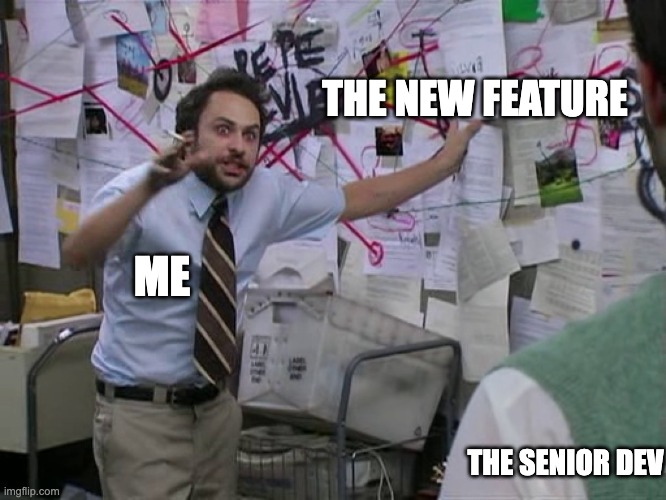Pull Requests are actually really good
So I recently ran into this Video from the Chanel "Continous Delivery" on YouTube which has the title "Why Pull Requests Are A BAD IDEA". Don't use Pull Requests
Additionally, I discovered this article: Pull Requests are holding back your team from David Masters.
It looks like there is kind of a movement to abandon the idea of Pull Requests. Based on the Like-Comment-Ration on the video and the article, you can see that this is not an easy topic to grasp. In fact it is a topic that is based on multiple layers. I for one, love working with Pull Requests and can see extreme benefits of using them on the entire development team.
Don't let a Pull Request block you

This is a common mistake with pull requests: A pull request should never block you.
You should never wait for someone to accept a Pull Request. We're working with Git so use the power to create a branch based on the changes and start working on the next ticket. This is not an easy task, but a task you and your colleagues should take time to learn. Practice how to resolve Merge Conflicts and how to rebase your development branches.
Talk directly with your colleagues if possible. You don't have make everything via the build-in comment system, you can also talk to other developers. It is not forbidden and sometimes even faster to talk to someone and sometimes this is the best way to resolve conflicts that couldn't be done through text.
If you have problems getting the code in the right time, create "Service Level Agreements" (SLA) and routines that allows you to ship the product as fast as possible. Create rules when a Pull Request can be skipped. Talk with your Incident Management and talk with your Product Management to create something that helps in your work environment.
A pull request is the perfect opportunity for asynchronous working. File in a pull request and start the next task and come back later if someone has feedback for you. So basically open the Pull Request and forget about it, you'll get a notice if you want e.g. when you check your mailbox. Do the next important task, don't let it be in your mind. Your time is precious don't let others take it from you.
It is important to develop your writing skills if you want to go all the way on the async path. A simple "Are you sure?" or "Could we do this better?" is not enough. Write down your thoughts on this matter and most important: be nice about it. Nobody likes assholes and the Tec-World is full of them, so be one less.
Pull Requests vs. Code Reviews vs. Pair Programming

I used a "versus" in this headline, but really don't think that these techniques are enemies. They all have their individual techniques, but should be viewed separately and an addition to each other. A pull request should be an addition to the code review and pair programming. These aren't alternatives to each other.
I am a fan of an upfront code review, so review that is made before it is merged into the main branch. A pull request can help you with your code reviews. In tools like Gitlab or Github, code comments and suggestions can be added very easily. So these two can benefit from each other.
Pair Programming can also be used in combination with Pull Requests. Just sit together, do your programming stuff together with a colleague, the one who programmed opens a PR and the second person accept this PR. Viola Pair Programming documented directly in your Git history with Pull Requests.
Trunk Based Development
A trunk based development does NOT mean that you can't have feature branches and pull requests. It just says that long-lived feature-branches must be avoided and merged as early as possible. This means that there is NO "dev" branch that is merged after a few weeks or just once a month. Everything happens on the "trunk" and the "trunk" is the branch that will be shipped on the production system. Trunk based development does not mean "Commit every change to the trunk", it just means that you don't use a development branch that will be merged months or weeks later into the trunk. Nobody wants that. Create small, simple branches that can be fastly reviewed. Nearly everything can be break down in very simple and very small chunks, just try it out.
And remember, reverting certain commits could be more time-consuming, then a discussed pull request.
A Pull Request can help you to keep your history cleaner, because you may not need to revert as often, because the code review and continuous integration pipeline will be done before merging this request. It's not granted, but a pull request can help you with this, by showing how these features or bugfixes were developed, but it is just one step cleaner than not doing it.
Please check also this site: https://trunkbaseddevelopment.com/ Which explains it better in much more detail than I ever could in this simple block post.
Line of Defense

How many times did you broke production? Once? Multiple times? Never? If you said never, you are lucky, but you will break things and won't be your last time.
A pull request can be your last line of defense, where a person can have a extra look, before the code goes to production. The person reviewing this PR needs to click, that the Pull Request has been reviewed. This may seem a little advantage but that one click can save a lot of trouble on shipping day.
A pull request is not about trust. It's about protecting the product before shit hits the fan. But most important: A Pull Request protecting you from breaking stuff and creating stress. I can live with a bunch of open Pull Requests, but I don't want to be stressed out. My job can be stressful, I don't need more of it. Don't rush your features. I trust my colleagues (and myself), that they (and me) want to build the best software possible. We'll break things, if a Pull Request will avoid that once or twice it is worthy work habit.
In Germany there is term "Vorausschauendes Fahren" (which I looked up and found the term "anticipatory driving" and I don't know if this is a thing :D). If you are preparing for a driver license you'll learn this term and maybe asked for it in the exams. It means if you driving a car, you also have to watch the other traffic participants and adapt your driving. Car is going too fast? Slow your own car, so you can see if the driver slows down. See some kids on the sidewalk? Some kids could probably run on the street. Don't let people (including yourself) crash the code. You can be the best programmer/driver possible. But sometimes it is good if someone else is also looking at the street/code.
Every big company has quality insurance. I believe that companies like BMW trust their employees. Nontheless these company will run some tests on these cars before they leave the factory. We all wouldn't buy these cars if they don't run through these feedback loops. And a pull request is nothing less. A required code review and a run through a CI-Pipeline before it hits production.
Via Pull Requests you can run Continuous-Integration pipelines on the code, before it reaches the main branch. So you protect not only your product, but also other developers to run into this error and trigger a tickets or chat messages coming up.
Show the Progress

A Pull Request can show what belongs together. Commits based on Reviews or commits that have been forgotten. Every follow-up commit can be listed here. If you wouldn't use PRs these commits are shattered all around the main branch and is harder to connect the dots, if you are on a bug hunt and try to understand something in the history. Even with Pull Requests this isn't a task you could avoid entirely, but because you are not committing directly on the main branch, you are not seduced to make it directly on the main branch and scatter these commits on the timeline.
You are the chosen reviewer? But you don't have a clue about the topic? No problem, just add your thoughts to the PR and add another Reviewer to the process. I used at multiple times in my career and it was never useless. Don't be afraid to get some experts in the feedback cycle if you are not sure about the topic.
Conclusion
As you can see I'm a defender of pull requests. Something that makes Open Source better, can help companies to make their code better.
Let's face it, Open Source has most of the time a higher code quality standard than most companies. And I think a big part here plays the Pull Requests. It helps async working, creating continuous delivery pipelines and taking a better look on the code before it gets into the main branch. I even use PRs for my private projects. Just to have a extra level of security. I check the code before click the merge button and I can't count how many bugs and flaws I discovered before it was merged. In my opinion this should be used by everyone, not every bug will be discovered by this, but it can save you and your team time and money.